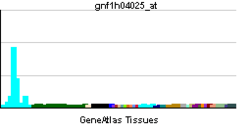Dock10
| DOCK10 | |||||||||||||||||
|---|---|---|---|---|---|---|---|---|---|---|---|---|---|---|---|---|---|
| Identifiers | |||||||||||||||||
| Aliases | DOCK10, DRIP2, Nbla10300, ZIZ3, Dock10, dedicator of cytokinesis 10 | ||||||||||||||||
| External IDs | MGI: 2146320 HomoloGene: 45952 GeneCards: DOCK10 | ||||||||||||||||
| |||||||||||||||||
| RNA expression pattern | |||||||||||||||||
   | |||||||||||||||||
| More reference expression data | |||||||||||||||||
| Orthologs | |||||||||||||||||
| Species | Human | Mouse | |||||||||||||||
| Entrez | |||||||||||||||||
| Ensembl | |||||||||||||||||
| UniProt | |||||||||||||||||
| RefSeq (mRNA) | |||||||||||||||||
| RefSeq (protein) | |||||||||||||||||
| Location (UCSC) | Chr 2: 224.77 – 225.04 Mb | Chr 1: 80.5 – 80.76 Mb | |||||||||||||||
| PubMed search | [1] | [2] | |||||||||||||||
| Wikidata | |||||||||||||||||
| View/Edit Human | View/Edit Mouse |
Dock10 (Dedicator of cytokinesis), also known as Zizimin3, is a large (~240 kDa) protein involved in intracellular signalling networks.[3] It is a member of the DOCK-D subfamily of the DOCK family of guanine nucleotide exchange factors, which function as activators of small G proteins.
Discovery
Dock10 was identified via bioinformatic approaches as one of a family of evolutionarily conserved proteins (the DOCK family) that share significant sequence homology.[4] Dock10 is expressed in peripheral blood leukocytes[5] as well as in the brain, spleen, lung and thymus.[6]
Structure and Function
Dock10 shares the same domain arrangement as other members of the DOCK-D/Zizimin subfamily as well as a high level of sequence similarity.[6] It contains a DHR2 domain that is involved in G protein binding and a DHR1 domain, which, in some DOCK family proteins, interacts with membrane phospholipids. Like other DOCK-D subfamily proteins Dock10 contains an N-terminal PH domain, which, in Dock9/Zizimin1, mediates recruitment to the plasma membrane.[7] The DHR2 domain of Dock10 appears to bind to the small G proteins Cdc42, TC10 and TCL although these interactions are of low affinity.[6] The physiological role of Dock10 is poorly characterised, however a study in lymphocytes has shown that Dock10 expression is upregulated in B-lymphocytes and Chronic Lymphocytic Leukemia (CLL) cells in response to the cytokine IL-4.[5] This suggests that Dock10 may have a role in B-cell activation and proliferation. Another study identified Dock10 as a protein that was overexpressed in some aggressive papillary thyroid carcinomas.[8]
References
- ↑ "Human PubMed Reference:".
- ↑ "Mouse PubMed Reference:".
- ↑ "Entrez Gene: DOCK10 dedicator of cytokinesis 10".
- ↑ Côté JF, Vuori K (December 2002). "Identification of an evolutionarily conserved superfamily of DOCK180-related proteins with guanine nucleotide exchange activity". J. Cell Sci. 115 (Pt 24): 4901–13. doi:10.1242/jcs.00219. PMID 12432077.
- 1 2 Yelo E, Bernardo MV, Gimeno L, et al. (July 2008). "Dock10, a novel CZH protein selectively induced by interleukin-4 in human B lymphocytes". Mol. Immunol. 45 (12): 3411–18. doi:10.1016/j.molimm.2008.04.003. PMID 18499258.
- 1 2 3 Nishikimi A, Meller N, Uekawa N, et al. (February 2005). "Zizimin2: a novel, DOCK180-related Cdc42 guanine nucleotide exchange factor expressed predominantly in lymphocytes". FEBS Letters. 579 (5): 1039–46. doi:10.1016/j.febslet.2005.01.006. PMID 15710388.
- ↑ Meller N, Westbrook MJ, Shannon JD, et al. (January 2008). "Function of the N-terminus of zizimin1: autoinhibition and membrane targeting". Biochem. J. 409 (2): 525–33. doi:10.1042/BJ20071263. PMC 2740492
 . PMID 17935486.
. PMID 17935486. - ↑ Fluge Ø, Bruland O, Akslen LA, et al. (February 2006). "Gene expression in poorly differentiated papillary thyroid carcinomas". Thyroid. 16 (2): 161–75. doi:10.1089/thy.2006.16.161. PMID 16676402.
Further reading
- Nishikimi A, Meller N, Uekawa N, et al. (2005). "Zizimin2: a novel, DOCK180-related Cdc42 guanine nucleotide exchange factor expressed predominantly in lymphocytes". FEBS Lett. 579 (5): 1039–46. doi:10.1016/j.febslet.2005.01.006. PMID 15710388.
- Meller N, Merlot S, Guda C (2005). "CZH proteins: a new family of Rho-GEFs". J. Cell Sci. 118 (Pt 21): 4937–46. doi:10.1242/jcs.02671. PMID 16254241.
- Côté JF, Vuori K (2006). "In vitro guanine nucleotide exchange activity of DHR-2/DOCKER/CZH2 domains". Methods Enzymol. 406: 41–57. doi:10.1016/S0076-6879(06)06004-6. PMID 16472648.